- Health Conditions A-Z
- Health & Wellness
- Nutrition
- Fitness
- Health News
- Ayurveda
- Videos
- Medicine A-Z
- Parenting
How To Identify A Counterfeit Ozempic? Look For These Signs, Details Inside
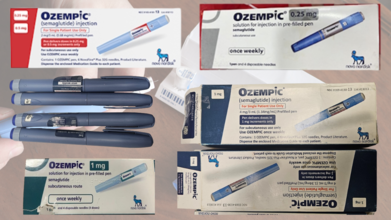
Credits: FDA, TGA, Securing Industry
Recently, an Iowa-based pharma company is dragged in an Ozempic lawsuit, reason? For selling counterfeit Ozempic.
What Is Ozempic?
Ozempic is a popular drug used for diabetes and weight-loss. Its official website notes that a medicine prescribed for people with type 2 diabetes and it comes in injection of .5mg, 1mg, or 2mg. It is injectable along with diet and exercise to improve blood sugar in people with type 2 diabetes.
The website also notes that it is the "first and only medicine in its class (GLP-1) proven to help lower the risk of worsening kidney diseases, kidney failure, and death due to cardiovascular disease in adults who also have chronic kidney disease".
What Happens When You Consume Counterfeit Ozempic?
The presence of fake Ozempic in the market is alarming. They are sold in lower prices, and could cause serious dangers to your life. One of the reasons being that these counterfeit Ozempic drugs may not have undergone the rigorous safety and efficacy testing that genuine medications do.
As per the Shapiro Legal Group, in 2023, incidents involving counterfeit Ozempic led to serious health emergencies in the United States.
ALSO READ: Iowa-based Pharmacy Faces Charges For Selling Counterfeit Ozempic
Three individuals experienced dangerously low blood sugar levels, after using the Ozempic pen. The pen instead contained insulin glargine, a medication used for long-acting blood sugar control in patients with diabetes. As per America's Poison Control Centers, all three of these cases were reported by the same regional poison control center, which meant that there might be a concentrated source of counterfeit Ozempic.
The Health Risks Counterfeit Ozempic Puts You At
Hypoglycemic Shock
This happens when your blood sugar levels drop dangerously low, and leads to confusion, trembling, heart palpitations, and sweating. Counterfeit Ozempic containing insulin instead of semaglutide can induce this condition unexpectedly in non-diabetics.
Coma
It is a deep state of unconsciousness, which can be triggered by severe hypoglycemia.
Infections
This can happen if you use non-sterile counterfeit Ozempic injections, which can introduce bacteria into the body. The signs could be redness, swelling, pain, itching, and pus at the injection site.
Seizures
This can happen when your counterfeit Ozempic contains insulin. As a result, it your blood sugar can drop and lead to uncontrollable jerking movements, loss of consciousness, and confusion.
How To Identify Counterfeit Ozempic?

The World Health Organization (WHO) has identified that counterfeit Ozempic have few features that consumers must be vary about. These include:
- Lot Number and Serial Number
- Pen's Scale
- Label Quality
- Spelling Mistakes
How To Check Lot Number And Serial Number For Fake Ozempic?
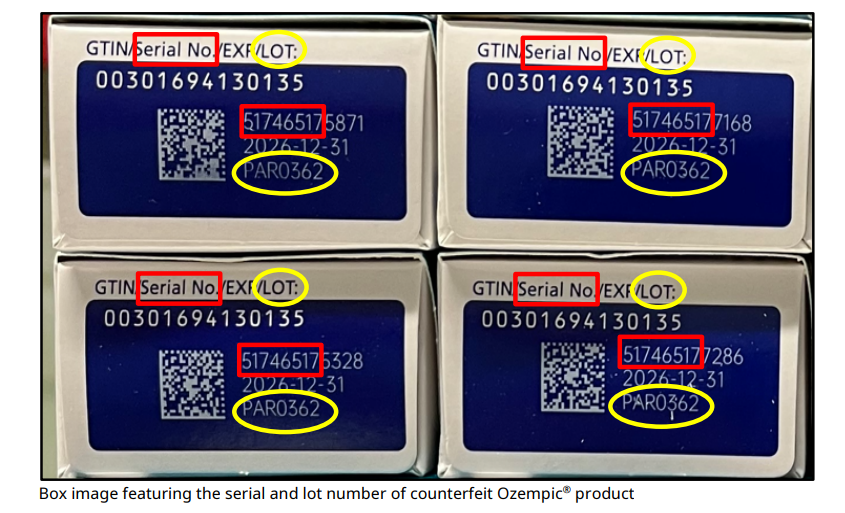
Novo Nordisk, a global health company in its press release noted that Ozempic box that has a lot number PAR0362, and serial number that begins with the first eight digits: 51746517 are not authentic. Novo Nordisk has asked people to report to Food and Drug Administration (FDA) in case they come across counterfeit Ozempic.
How To Check Pen's Scale For Fake Ozempic?

The WHO notes that falsified Ozempic pens may have a scale extending out from the pen when settling the dose. Therapeutic Goods Administration (TGA), under the Department of Health, Disability and Ageing, Australia also provides photos of extended pen scale on its website.
How To Check The Label Quality For Fake Ozempic?
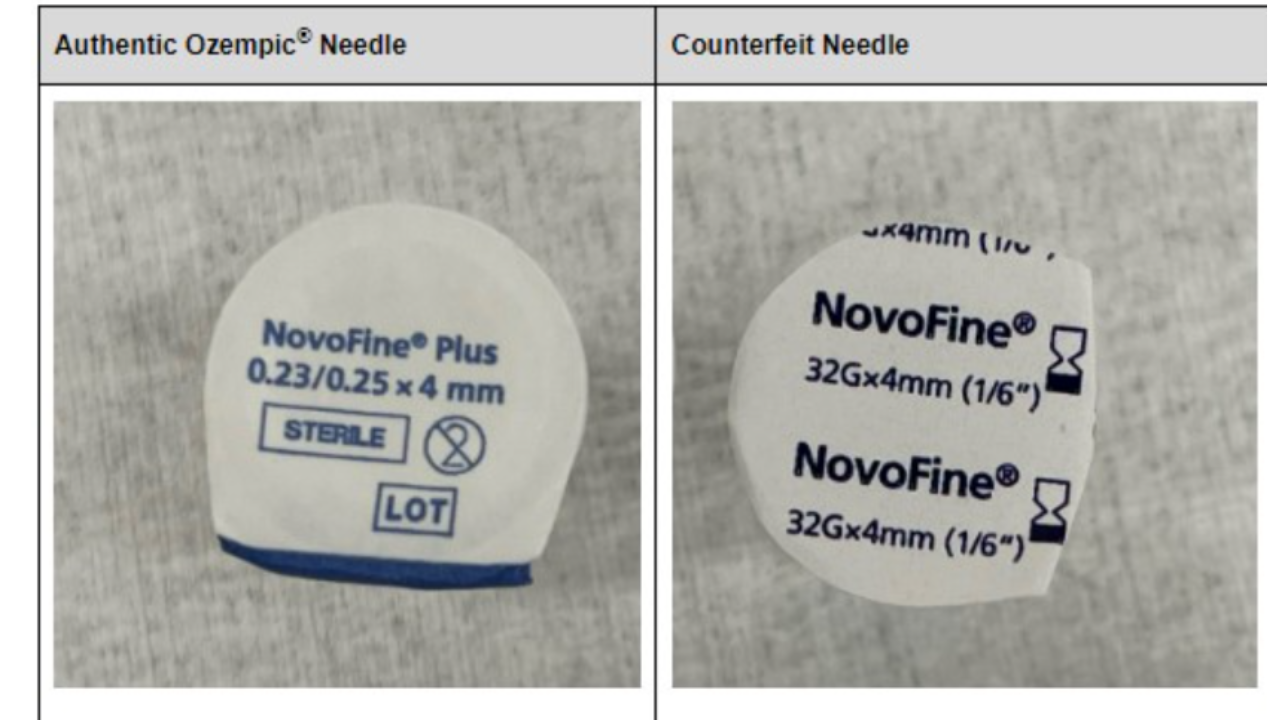
FDA has provided photo evidence for consumers to differentiate between a fake and an authentic Ozempic needle, by looking at its label and packaging.
What To Look For?
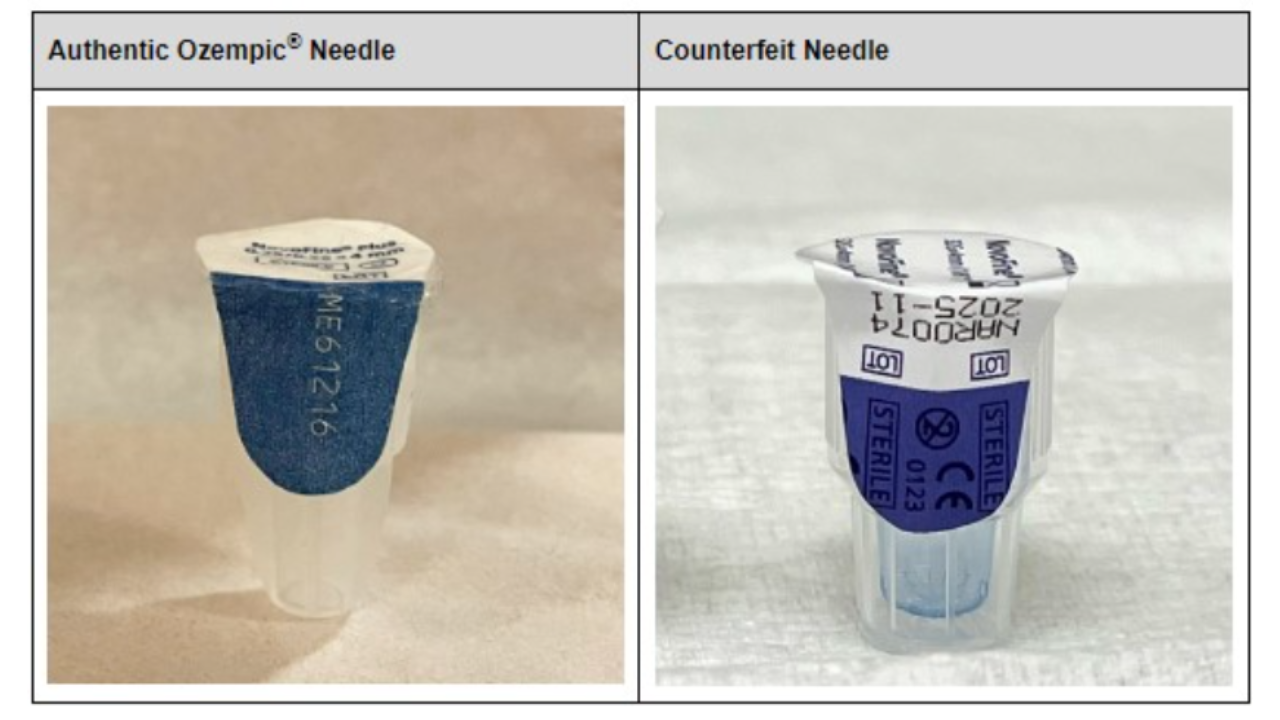
In Genuine Needle: The paper tab on the needle is imprinted with the needle lot number
In Counterfeit Needle: The paper on the needle is imprinted with the Ozempic product carton lot number
In Genuine Needle: The blue area on the paper tab only contains the lot number and no other text, while the inner needle cover is transparent
In Counterfeit Needle: The blue area on the paper tab has texts written on it and the inner needle cover has a blue transparent color
In Genuine Needle: The paper tab states NovoFine Plus
In Counterfeit Needle: The paper tab states NovoFine
Who Was Ludwig Minelli, Founder of the Swiss Right-to-Die Organization, Who Died by Assisted Suicide at 92?

Credits: AP
Ludwig Minelli, 92, died on Saturday just days before his 93rd birthday, which would have been on December 5. He was the founder of Swiss right-to-die organization Dignitas. He has died by assisted suicide.
The members of organization paid tribute to him and said that he had always led a "life for freedom of choice, self-determination, and human rights".
Right-To-Die By Minelli
Minelli founded Dignitas in 1998, which has helped many people to choose how they wish to die with dignity. He however began his career as a journalist and worked as a correspondent for the German news magazine Der Spiegel. He then studied law and that is when his interest in human rights took off.
Throughout his life, he campaigned for the right to die and gave Dignitas the slogan: "dignity in life, dignity in death".
"I am persuaded that we have to struggle in order to implement the last human right in our societies. And the last human right is the right to make a decision on one's own end, and the possibility to have this end without risk and without pain," he said in a 2010 BBC interview.
He founded Dignitas after he split from an older Swiss assisted dying organization, Exit, because he said the rules felt too restrictive.
The reason for Dignitas to become famous was because the way it operated. Dignitas offered assisted suicide to non-Swiss citizens who travel to Switzerland because assisted dying is not permitted in their own countries. In a 2008 interview to Der Tagesspiegel, he said that Dignitas assisted 840 people to die, and 60% of them were Germans.
His Life Amid Criticism And Legal Battles
While he devoted his life for a cause, he was not spared from criticism. He was often criticized for an alleged lack of transparency over the financial dealings of the organization. He was further criticized for offering assisted dying options to those who were not terminally ill, but wanted to end their lives. He also faced numerous legal battles, and many of which were also appealed to Swiss apex court.
The Wins He Made
As per Dignitas, his work had a lasting influence. In 2011, the European Court of Human Rights announced the right of a person capable of judgment to decide on the manner and the time of their own end of life.
While in his own country, assisted dying was permitted under Swiss law since 1942, under strict condition, of course, Euthanasia still remains illegal there.
The main difference is that in Switzerland, a physician cannot administer a lethal injection, which is what euthanasia is. However, a physician can provide the means for a person to end their own life, and the individual must perform the final act themselves.
The legality of assisted suicide is based on Article 115 of the Swiss Criminal Code from 1942, which prohibits assistance only if motivated by selfish reason. The conditions for assisted suicide includes that the assistance must not be for selfish motives and must be provided to someone of sound mind who has made a self-determined and enduring decision to die. The person must also be suffering from an unbearable and uncontrollable condition.
Your Butt Shape Could Be a Clue to Your Diabetes Type; Here’s How
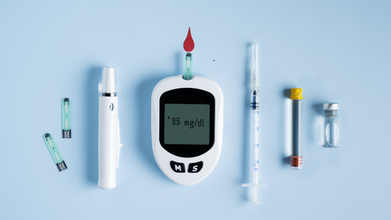
Credits: Canva
The shape of your gluteus maximus, the largest muscle in your backside, may offer surprising clues about your likelihood of developing diabetes. New research suggests that the contours of this major muscle change with age and health conditions, helping scientists better understand how fitness, muscle health, and metabolism are connected.
Ageing, Weight, and Diabetes: What We Already Know
For years, the NHS has warned that ageing and excess weight increase the risk of developing Type 2 diabetes. However, this new study goes beyond traditional measures, proposing that the shape of the gluteus maximus itself shifts as people age or develop conditions such as osteoporosis or diabetes. These subtle muscular changes could provide valuable information about a person’s metabolic health.
Why the Gluteus Maximus Matters
Researchers from the University of Westminster highlighted that the gluteus maximus plays a key role not just in movement but also in metabolic regulation. Healthy, well-maintained muscles can improve blood sugar control and reduce the burden on organs involved in glucose processing.
Dr Marjola Thanaj, co-author of the study from the university’s Research Centre for Optimal Health, explained, as reported by Independent: “People with higher fitness, as measured by vigorous physical activity and hand grip strength, had a greater gluteus maximus shape, while ageing, frailty and long sitting times were linked to muscle thinning.”
Mapping the Muscle
To understand these differences, researchers used advanced MRI 3D mapping to create a detailed anatomical model of the gluteus maximus. By analyzing more than 61,000 MRI scans from the UK Biobank database, they discovered that the shape, not the size, of the muscle varied significantly between individuals with diabetes and those without it.
What the Study Found
The MRI analysis revealed distinct, sex-specific patterns linked to Type 2 diabetes. Among male participants living with the disease, those classified as “frail” showed widespread muscle shrinkage across the gluteus maximus, indicating a loss of muscle quality and strength.
Women with diabetes, on the other hand, had enlarged muscle shapes — not because of increased muscle strength, but because of fat infiltrating the muscle tissue. This type of fat infiltration often signals declining muscle function and poorer metabolic health.
Dr Thanaj said these patterns underline a crucial point: men and women can experience the same illness in very different biological ways, which may influence diagnosis and treatment strategies in the future.
Why Maintaining Muscle Mass Matters
Beyond appearance or strength, muscle health is essential for long-term wellbeing. Maintaining muscle mass supports blood sugar regulation, reduces the risk of cardiovascular disease, and lowers the likelihood of developing fatty liver disease, all conditions closely linked to metabolic health.
Professor Louise Thomas, senior author of the study, told The Times: “Maintaining muscle mass as we age is one of the most important things we can do for our long-term health. If people understand how important their muscles are, and make small changes to keep them healthy, that could have a huge impact on disease across the population.”
Small Steps to Strengthen Your Glutes
Improving glute muscle health doesn’t require intense gym sessions. Simple actions such as taking the stairs instead of the lift, adding squats or lunges to your routine, or breaking up long periods of sitting can help tone and strengthen the gluteus maximus.
4 Simple Tests That Can Detect Kidney Diseases Early, According To Doctor

Credits: Canva
Kidney disease is rising at an alarming pace worldwide, and it’s now among the top causes of death. A Lancet study highlights that the number of people living with chronic kidney disease jumped from 78 million in 1990 to nearly 788 million in 2023. That’s a massive tenfold spike, and a reminder that our kidneys need more attention than we realize.
The tricky part? Kidney problems often progress silently. Many people don’t realize anything is wrong until the kidneys are already significantly damaged. That’s why experts strongly emphasize early screening. According to nephrologists like Dr Arjun Sabharwal, a few simple tests — often quick and inexpensive — can help catch kidney issues early and improve treatment outcomes.
Below are the four key tests everyone should know about, especially if you have diabetes, high blood pressure, a family history of kidney disease, or you’re simply trying to stay proactive about your health.
Creatinine Blood Test & eGFR: Your First Kidney Health Check
Creatinine is a waste product filtered out by the kidneys. A routine blood test measures its level, but creatinine alone doesn’t tell the full story. That’s where eGFR (Estimated Glomerular Filtration Rate) comes in.eGFR uses creatinine values along with age and other factors to estimate how well your kidneys are functioning overall. Doctors often say, “Creatinine is just a number — eGFR tells you how much your kidneys are working.”
An eGFR below normal may be an early signal that your kidneys aren’t filtering efficiently, even if you feel fine.
Cystatin C: A More Accurate Indicator for Some People
Cystatin C is a protein produced naturally by all cells. When kidneys are healthy, its levels stay stable; when the kidneys struggle, the levels rise.
Experts highlight that Cystatin C can be more reliable than creatinine for people with very high muscle mass, those who work out intensely, or individuals taking supplements that may affect creatinine readings. If creatinine results seem unclear or inconsistent, this test adds clarity.
Urine Dipstick Test: Quick and Tells You a Lot
Before kidney function takes a major hit, the body often shows early warnings — one of which is protein leakage in urine. A urine dipstick test is one of the fastest ways to detect this.
A chemically treated strip is dipped into your urine sample, and if proteins like albumin are present, the strip changes color. It’s simple, non-invasive, and helpful for spotting early kidney damage.
Urine Protein-to-Creatinine Ratio (UPCR): How Much Protein Is Leaking
If a dipstick shows abnormalities, the next step is often a UPCR test. This test measures exactly how much protein is leaking into the urine relative to creatinine. Higher levels may signal worsening kidney function or underlying disease. Doctors use UPCR to assess the severity of kidney damage and monitor progress over time.
When to See a Nephrologist
If any test shows rising creatinine, an abnormal eGFR, protein in urine, or blood detected on a dipstick, it’s crucial to book an appointment. Lifestyle tweaks, home remedies, or detox drinks cannot reverse kidney damage. Expert evaluation is essential.
© 2024 Bennett, Coleman & Company Limited

